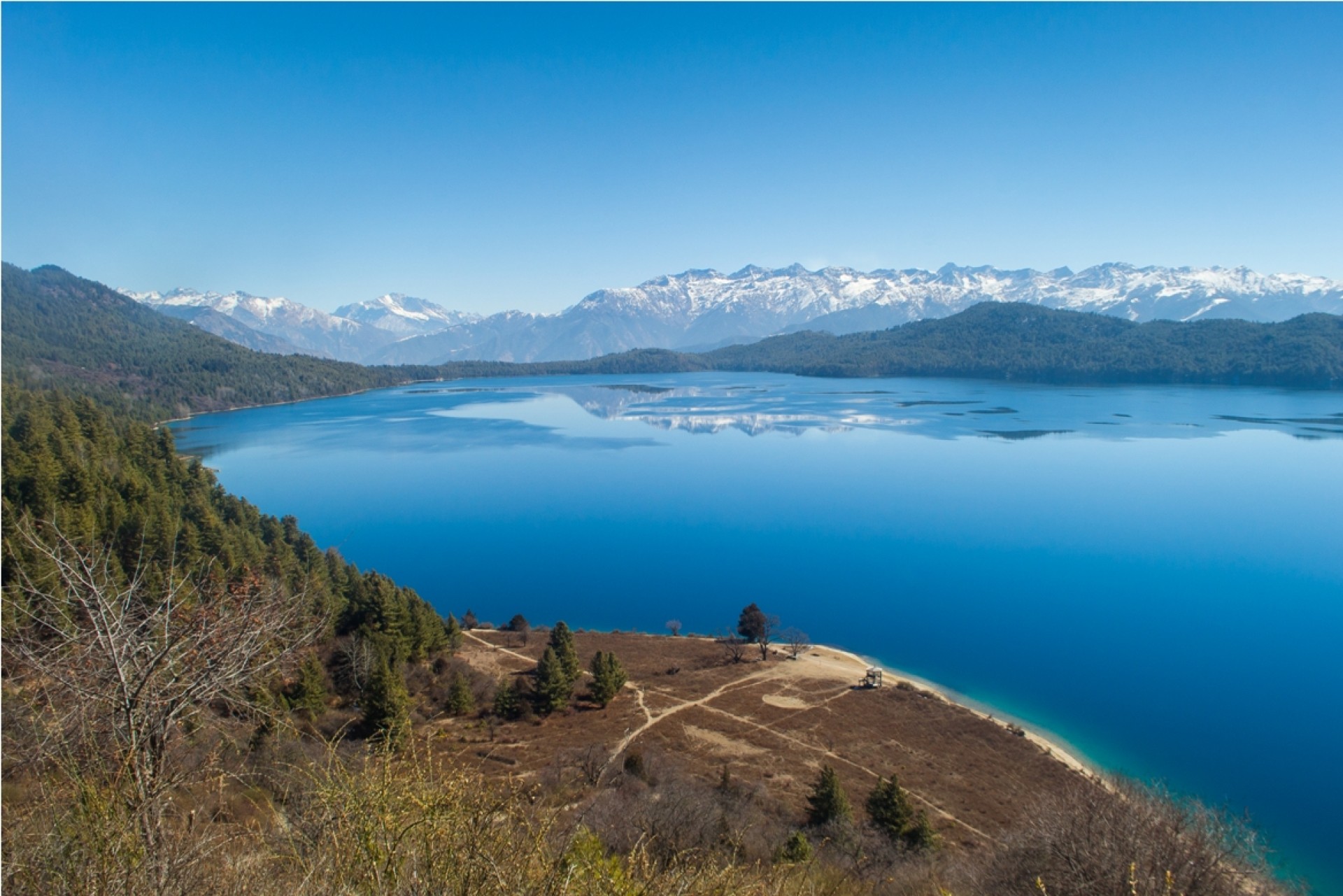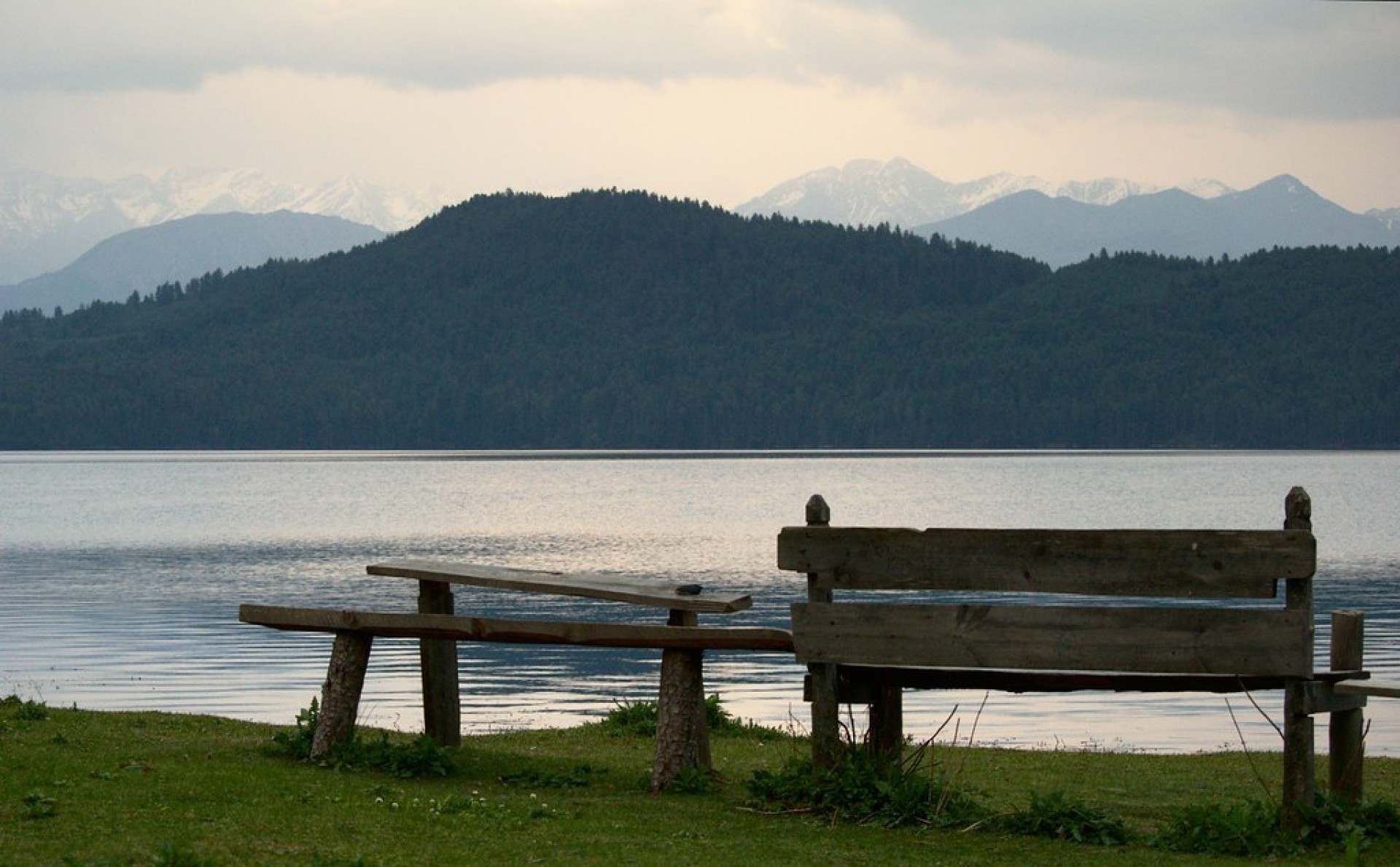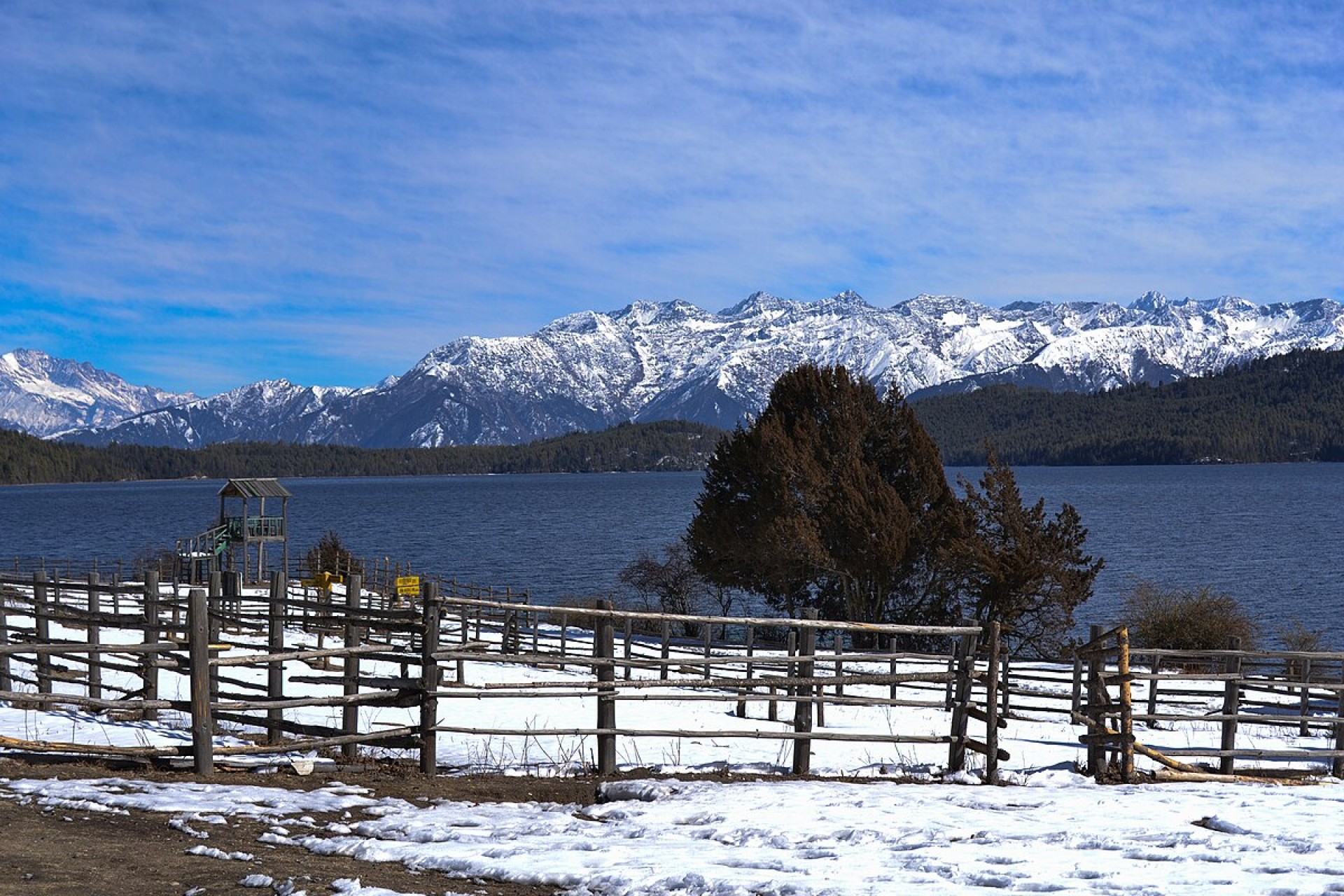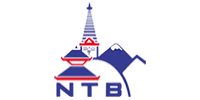-
Places to go
-
Things to do
-
Adventure
Nature
Culture
Wellness
Others
-
-
Festivals & Events
-
Festivals
Event Calendar
-
-
Plan Your Trip
-
Trip Ideas
Travel Details
Book Your Trip
-
- Travel Updates
Reflections of Heaven: Exploring Nepal’s Most Serene Lake
High in the remote northwestern Himalayas of Nepal lies Rara Lake, a place so peaceful and pristine that it feels like a dream. Often called the Queen of Lakes, Rara is a dazzling blue jewel set against snow-capped peaks, dense pine forests, and rolling alpine meadows. For travelers seeking authentic beauty far from the crowds, Rara is a destination that truly deserves a place on your bucket list.
Nepal’s Largest and Most Pristine Lake
Located at an altitude of 2,990 meters (9,810 ft), Rara Lake is the largest lake in Nepal, covering about 10.8 square kilometers. The lake stretches roughly 5 kilometers in length and 3 kilometers in width, with a remarkable maximum depth of 167 meters.
Its waters shift from deep blue to emerald green as the light changes, reflecting the surrounding Himalayan landscapes like a mirror.
Rara sits at the heart of Rara National Park, Nepal’s smallest national park at 106 square kilometers, established in 1976 to protect its rich biodiversity. Because of its remote location in Mugu District, the area remains largely untouched by mass tourism — making it one of the most pristine natural spots in the country.

A Sanctuary for Wildlife and Nature Lovers
Rara National Park is a paradise for wildlife enthusiasts and birdwatchers. The park shelters red pandas, musk deer, Himalayan black bears, Himalayan tahr, and occasionally even snow leopards, though sightings of the latter are extremely rare.
Over 200 species of birds have been recorded here, including the stunning Impeyan pheasant (Danphe) — Nepal’s national bird — and several migratory waterfowl that visit during winter. Three species of snow trout (Schizothorax) are found in the lake, including some that are endemic, meaning they live nowhere else in the world.
For photographers and nature lovers, Rara is heaven — every turn of the trail, every sunrise, and every ripple on the water offers a perfect frame.
The Journey Is Part of the Adventure
Getting to Rara is an adventure in itself, but one well worth the effort. The most common route is to fly from Kathmandu to Nepalgunj, then take a short flight to Talcha Airport, which lies just a few hours’ walk from the lake. Alternatively, more adventurous travelers can trek overland from Jumla, a route that takes several days through scenic villages, lush forests, and terraced fields.
The journey introduces you to remote mountain life, traditional wooden houses, and welcoming locals who will greet you with warm smiles and cups of butter tea. Whether by air or foot, reaching Rara feels like a pilgrimage to a hidden paradise.
A Place to Disconnect and Reconnect
In a world full of noise and notifications, Rara offers something rare — silence. With minimal connectivity and limited modern infrastructure, it’s the perfect place to unplug and just be.
Imagine sitting by the lakeshore as the evening light fades, mountains glowing gold in the distance, and the only sounds are rustling pines and birds returning home. Many visitors describe their stay as deeply meditative — a chance to reconnect with nature and themselves.

Culture and Local Hospitality
The communities around Rara, mainly in Mugu and Jumla districts, are home to diverse ethnic groups, including Thakuri and Tibetan-influenced peoples. Life here moves slowly, following rhythms set by nature. Visitors can experience genuine mountain hospitality, taste traditional dishes like dhido (a millet or buckwheat porridge) and yak cheese, and witness vibrant local festivals that blend Hindu and Buddhist traditions.
Sharing stories around a fire or helping locals with their daily routines turns travel here into something much deeper — an experience of connection rather than consumption.
When to Visit Rara
The best seasons to visit are spring (March–May) and autumn (September–November), when the weather is clear, the skies are brilliant blue, and the trails are dry. In spring, rhododendrons bloom across the hills, painting the landscape with red and pink hues. Autumn brings crisp air and perfect reflections on the lake.
Winter (December–February) brings snow and subzero temperatures, and the lake sometimes partially freezes, offering a stark, quiet beauty — though access can be difficult due to weather.

Rara isn’t just a destination; it’s an experience — one that reminds you of the pure power of nature and the beauty of simplicity. It’s a place where mountains, forests, and silence meet; where you trade Wi-Fi for wildflowers and traffic for the whisper of wind over water.
If you’re looking for something real, something raw, and something unforgettable, put Rara Lake at the top of your travel list. Because once you’ve stood on its shores and watched your reflection merge with the sky, you’ll understand why travelers call Rara the heart of Nepal’s wilderness.
Nepal Tourism Board is a national tourism organization of Nepal established in 1998 by an Act of Parliament in the form of partnership between the Government of Nepal and private sector tourism industry to develop and market Nepal as an attractive tourist destination. The Board provides platform for vision-drawn leadership for Nepal’s tourism sector by integrating Government commitment with the dynamism of private sector.



